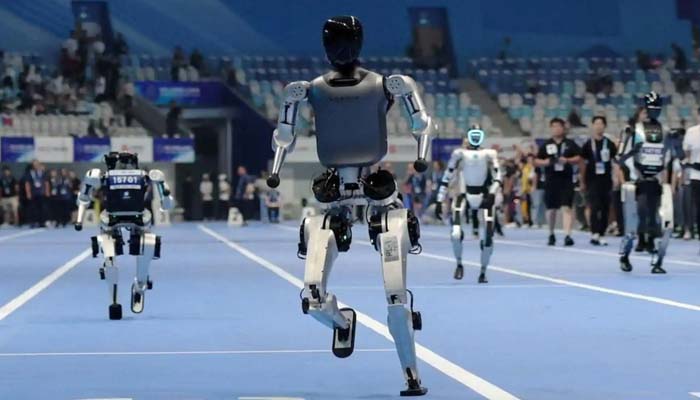China Unveils First Humanoid Robot Games Event

A New Era in Robotics: The World’s First Humanoid Robot Games
The world's first humanoid robot games officially kicked off in Beijing, marking a significant milestone in the intersection of technology and sports. The event, held at the National Speed Skating Oval—originally constructed for the 2022 Winter Olympics—brought together over 500 robots from 16 countries. These machines competed in a variety of events, ranging from athletic challenges like the 100-metre hurdles and basketball to practical tasks such as cleaning and medicine categorization. This unique blend of sports and technology offered an engaging spectacle for spectators.
On the opening day, the robots showcased a mix of awkward stumbles and moments of impressive skill, highlighting the rapid advancements in humanoid engineering. In the five-a-side football match, smaller robots moved across the pitch with determination but often found themselves tangled or toppled over. Meanwhile, in the 1,500-metre race, domestic champions from Unitree demonstrated remarkable speed, achieving a time of 6:29:37. While this was far from the human record, it still reflected significant progress in robotic movement.
This event represents a new chapter in robotics competitions, which have been around for decades but rarely focused exclusively on human-like machines. Organizers emphasized that humanoids present unique challenges, as they must balance, adapt, and interact in ways similar to humans. This aligns with China's growing investment in robotics, where the government has placed humanoids at the center of its national technology strategy. This initiative aims to enhance global competitiveness and spark public interest in the field.
The audience included families, students, and tech enthusiasts, many of whom were part of school-organized trips designed to inspire the next generation of innovators. One parent shared her hope that the experience would encourage her son to explore robotics and artificial intelligence. Enthusiastic spectators, such as 18-year-old Chen Ruiyuan, expressed their belief that robots could reach human-level capability within the next decade, citing the games as a source of inspiration.
China has already emerged as the largest market for industrial robots, and earlier this year, it announced a massive one-trillion-yuan fund to support startups in robotics and AI. Events like these not only showcase the country's technological strength but also serve as public platforms to promote awareness and interest nationwide.
As the games continue, visitors are treated to a mix of technical brilliance and light-hearted mishaps. From agile boxing bouts to kung fu robots struggling to get back on their feet, each moment is met with loud cheers from the crowd. These events provide a glimpse into the future of robotics, where machines are not just tools but participants in a dynamic and evolving landscape.
The humanoid robot games offer more than just entertainment; they represent a step forward in the development of intelligent machines capable of performing complex tasks. As the competition progresses, it will be fascinating to see how these robots continue to evolve and push the boundaries of what is possible. With each challenge, they bring us closer to a future where human-like machines play a vital role in our daily lives.

Comments
Post a Comment